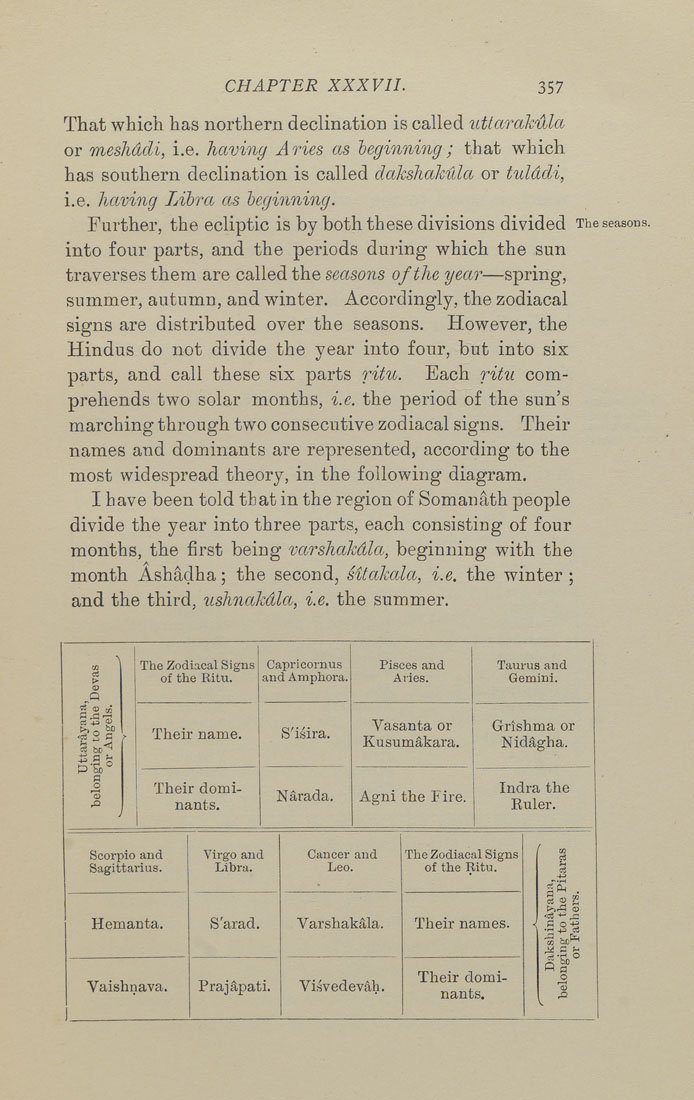Bīrūnī, Muḥammad ibn Aḥmad, Alberuni's India (v. 1)
(London : Kegan Paul, Trench, Trübner & Co., 1910.)
|
||
|
|
|
|
| Page 357 |

CHAPTER XXXVII. 357 That which has northern declination is called uttarakvlla or meshddi, i.e. having A ries as beginning; that which has southern declination is called dakshakula or tulddi, i.e. having Libra as hecginning. Further, the ecliptic is by both these divisions divided The seasons. into four parts, and the periods during which the sun traverses them are called the seasons of the year—spring, summer, autumn, and winter. Accordingly, the zodiacal signs are distributed over the seasons. However, the Hindus do not divide the year into four, but into six parts, and call these six parts ritu. Each ritu com¬ prehends two solar months, i.e. the period of the sun's marching through two consecutive zodiacal signs. Their names and dominants are represented, according to the most widespread theory, in the following diagram, I have been told that in the region of Somanath people divide the year into three parts, each consisting of four months, the first being varshctkdla, beginning with the month Ashadha; the second, sitakala, i.e. the winter; and the third, ushnakdla, i.e. the summer. uttardyana, belonging to the Devas or Angels. The Zodiacal Signs of the Ritu. Capricornus and Amphora. Pisces and Aries. Taurus and Gemini. Their name. S'isira. Vasanta or Kusum^kara. Grishma or Nid^gha. Their domi¬ nants. Narada. Agni the Fire. Indra the Kuler. Scorpio and Sagittarius. Virgo and Libra. Cancer and Leo. The Zodiacal Signs of the Ritu. - Dakshindyana, belonging to the Pitaras or Fathers. Hemanta. S'arad. Varshakala. Their names. Vaishnava. 1 Praj§.pati. Visvedevah. Their domi¬ nants. |
| Page 357 |







